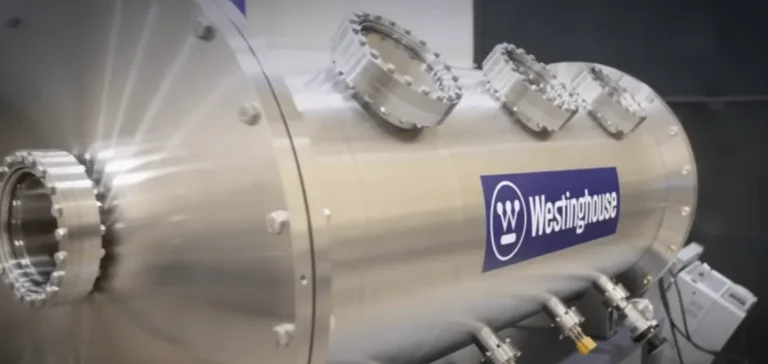The US Department of Energy (DOE) announced the names of the two companies selected to carry out the first nuclear microreactor tests in the United States. Westinghouse Electric Company and Radiant Nuclear will be the first companies to use the Demonstration of Microreactor Experiments (DOME) test facility, located at Idaho National Laboratory (INL).
First tests set for 2026
Westinghouse will test its experimental eVinci nuclear reactor, designed as a scaled-down 3-megawatt thermal (MWt) version of a future commercial transportable microreactor. The latter targets an electrical output of 5 megawatts electric (MWe) and employs advanced heat pipe technology to achieve passive cooling. Its potential applications cover various areas such as power supply for remote communities, mining operations, or data centres.
Radiant Nuclear, for its part, will test its Kaleidos Development Unit microreactor model. This high-temperature reactor is designed to generate 1.2 MWe and primarily aims to replace diesel-powered electrical generators. The entire unit—incorporating an electrical generator, cooling system, reactor and shielding—is packaged in a single shipping container, facilitating rapid deployment.
Innovative experimental framework
The DOME testing structure is installed in the former containment building of the Experimental Breeder Reactor-II (EBR-II). According to DOE, this decision enables reduction of environmental impacts, decreases testing costs, and mitigates the overall risks associated with microreactor projects.
In October 2023, Westinghouse, Radiant, and Ultra Safe Nuclear Corporation had received preliminary funding of USD3.9mn ($3.9mn) from the DOE for the front-end engineering design of their respective reactors.
Schedule and funding
The DOE anticipates launching the initial real-condition tests starting in spring 2026. Each experimental campaign is expected to last up to six months. The experiments will be entirely self-funded by participating companies, who must adhere to specific regulatory milestones set by the department to retain access to the DOME facility.
The DOE has already closed a first round of applications for scheduling tests within the DOME programme. A second round is anticipated to open in summer 2026, according to the department’s official announcement.
Mike Goff, Acting Assistant Secretary for Nuclear Energy at the DOE, stated in an official release: “Microreactors will play a major role in expanding the use of nuclear energy in the United States. The experiments carried out at the DOME facility will allow us to test these new reactor concepts that we will be able to count on in the future to reliably power our homes, military bases, and critical infrastructure.”






















